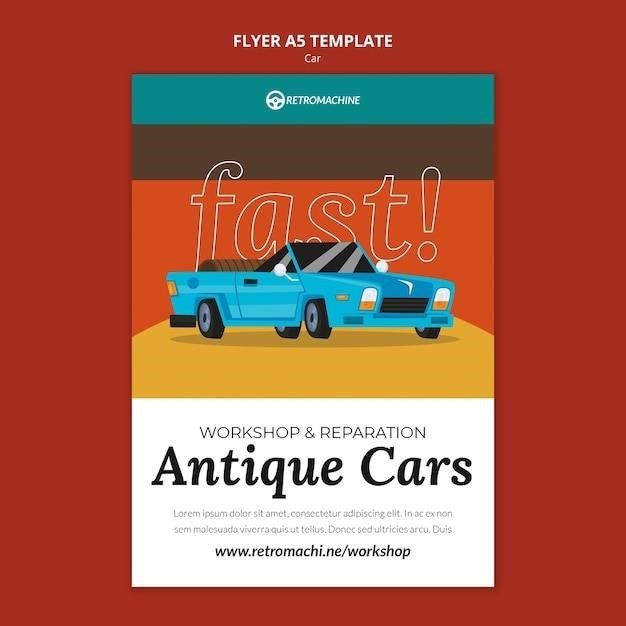
instructions for the chevrolet chevelle ss 1966 amt model pdf
Building the 1966 Chevrolet Chevelle SS AMT Model
This AMT assembly kit offers modelers an opportunity to build an outstanding display piece of the 1966 Chevrolet Chevelle, one of the automakers famous muscle cars. This kit includes intricate details that represent a factory-fresh model of the Chevelle with everything from its big-block 396 engine to its gleaming chrome trim.
Introduction
The 1966 Chevrolet Chevelle SS is a classic muscle car that continues to capture the hearts of car enthusiasts. For modelers, recreating this iconic vehicle in miniature form offers a rewarding and engaging experience. The AMT 1/25 scale model kit of the 1966 Chevelle SS is a popular choice for modelers of all skill levels, providing a detailed and accurate representation of this beloved automobile. This guide will provide you with a comprehensive overview of the kit, essential tools and materials, and detailed assembly steps to help you build your own stunning replica of the 1966 Chevrolet Chevelle SS.
This detailed model kit allows you to experience the thrill of assembling this classic muscle car from the ground up. Whether you’re a seasoned model builder or just starting out, the AMT 1966 Chevrolet Chevelle SS kit offers a rewarding and enjoyable project. With patience and attention to detail, you can create a truly impressive replica that will be a treasured addition to your collection.
Kit Overview
The AMT 1966 Chevrolet Chevelle SS model kit is a 1/25 scale representation of this iconic muscle car, capturing its distinctive design and powerful presence. The kit features over 100 parts, molded in white plastic with clear and chrome components, offering a realistic and detailed build. This kit includes a water-slide decal sheet with authentic markings and logos, allowing you to personalize your model with the Chevrolet Chevelle SS’s signature styling.
The kit includes detailed instructions that guide you through the assembly process, ensuring that you can create a high-quality replica of the 1966 Chevrolet Chevelle SS. The kit’s level of detail is impressive, allowing you to recreate the car’s intricate features, including its big-block 396 engine, chrome trim, and authentic interior. With its comprehensive parts and clear instructions, the AMT 1966 Chevrolet Chevelle SS model kit provides a rewarding and enjoyable build experience.
Tools and Materials
To successfully build the 1966 Chevrolet Chevelle SS AMT model, you’ll need a few essential tools and materials. A sharp hobby knife is crucial for carefully cutting and trimming plastic parts, ensuring a clean and precise fit. A pair of tweezers will help you handle small and delicate parts, preventing damage during assembly. Model cement, specifically designed for plastic models, is essential for securely bonding the parts together.
You’ll also need a good quality paint set for achieving the desired color and finish for your model. Consider using acrylic paints for their ease of use and quick drying time. A small brush, preferably with a fine tip, is perfect for applying paint to the model’s intricate details. A sanding block or sandpaper can help smooth out rough edges and imperfections, ensuring a smooth and professional finish. And, of course, you’ll need a well-ventilated workspace to allow the paint to dry properly.
Optional tools, such as a modeling sprue cutter, can further enhance your building experience, but aren’t strictly necessary. With the right tools and materials, you’ll be well-equipped to create a stunning replica of the 1966 Chevrolet Chevelle SS.
Assembly Steps
Building the 1966 Chevrolet Chevelle SS AMT model is a rewarding process, and following these steps will help you create a beautiful and accurate replica. Begin by carefully removing the parts from the sprues, using a hobby knife or sprue cutter to cleanly separate them. Take your time and avoid any unnecessary damage to the parts. Next, dry-fit the parts together, ensuring proper alignment and fit before applying any glue. This step allows you to identify any potential issues and make adjustments as needed. Once satisfied with the fit, carefully apply model cement to the designated areas, ensuring a secure bond.
Follow the detailed instructions provided in the kit, paying attention to the order of assembly. Each step is carefully designed to guide you through the process, minimizing the chance of errors. Remember to use a gentle touch when handling the delicate parts, especially the chrome and clear plastic components. If you encounter any difficulties, consult the instruction manual for detailed guidance or seek help from experienced model builders.
Patience and attention to detail are key to a successful build. Take your time, enjoy the process, and be proud of your finished 1966 Chevrolet Chevelle SS model.
Step 1⁚ Preparation
Before you begin assembling your 1966 Chevrolet Chevelle SS model, it’s crucial to prepare your workspace and gather the necessary tools and materials. Choose a well-lit and ventilated area to work in, as this will ensure optimal visibility and prevent any potential hazards from fumes. Lay down a protective covering, such as a piece of cardboard or a modeling mat, to protect your work surface from glue spills and paint splatters. Now, gather your essential tools, which include a hobby knife or sprue cutter for separating parts, a pair of tweezers for handling delicate components, a ruler or measuring tape for ensuring accurate dimensions, and a small container for storing the parts and sprues.
Next, familiarize yourself with the model kit’s contents. Carefully open the box and examine the various sprues containing the plastic parts, the decal sheet, and the instruction manual. The instruction manual is your guide, providing detailed step-by-step instructions, diagrams, and helpful tips for assembling the model. Take your time to review the manual thoroughly, ensuring a clear understanding of the assembly process. Now, you are ready to begin the exciting journey of building your 1966 Chevrolet Chevelle SS model.
Step 2⁚ Body Assembly

Begin the body assembly by carefully separating the body parts from the sprues. Use your hobby knife or sprue cutter to carefully snip the parts at their attachment points, taking care not to damage the plastic. Once the parts are separated, use a fine-grit sandpaper to smooth out any rough edges or mold lines, ensuring a seamless finish. Start by assembling the main body panels, carefully aligning and joining the pieces using plastic cement. Ensure a secure fit by applying gentle pressure and allowing the cement to dry completely.
Next, attach the doors, hood, and trunk lid to the body, paying attention to the proper alignment and fit. Use the instruction manual as your guide, ensuring that the parts are positioned correctly. Once the major body components are in place, add the grille, headlights, taillights, and other detailing parts, carefully following the instructions. Remember to use a small amount of cement for a clean and secure bond. Finally, attach the bumpers, ensuring they are properly aligned and secured to the body. After the glue has dried, you can start working on the interior assembly.
Step 3⁚ Interior Assembly
The interior assembly is a detailed process that requires careful attention to ensure a realistic and finished look. Start by carefully removing the interior parts from the sprues, ensuring that you don’t damage the delicate plastic. Clean up any flash or mold lines with fine-grit sandpaper for a smooth and seamless finish. Begin by assembling the dashboard, carefully aligning and attaching the various parts, including the instrument panel, gauges, and steering wheel. Use plastic cement to bond the parts together, ensuring a secure and clean connection.
Next, assemble the seats, ensuring that they are properly aligned and attached to the interior floor. Pay close attention to the positioning of the seatbelts, carefully attaching them to the appropriate points on the seat frames. Once the seats are in place, you can add the door panels, carefully aligning them with the existing bodywork. Remember to use a small amount of cement for a secure and seamless bond. Finally, add the remaining interior details, such as the headliner, carpeting, and rearview mirror, carefully following the instructions provided in the manual. Ensure that these parts are properly positioned and secured for a realistic and finished interior.
Step 4⁚ Chassis Assembly
The chassis assembly is a crucial step that requires careful attention to ensure a solid and stable foundation for your model. Begin by carefully removing the chassis parts from the sprues, ensuring that you don’t damage any delicate details. Clean up any flash or mold lines with fine-grit sandpaper for a smooth and seamless finish. Start by assembling the front suspension, carefully attaching the control arms, springs, and shock absorbers to the frame. Ensure that the suspension components are properly aligned and secure before moving on to the rear suspension.
Assemble the rear suspension components in a similar manner, attaching the control arms, springs, and shock absorbers to the rear axle. Once the suspension is in place, you can attach the wheels and tires, ensuring that they are properly aligned and centered. Use a small amount of cement to secure the wheels to the axles, ensuring a strong and durable connection. Finally, add the remaining chassis details, such as the exhaust system and fuel tank, carefully following the instructions provided in the manual. Ensure that these parts are properly positioned and secured for a realistic and finished chassis assembly.
Step 5⁚ Engine Assembly
The engine assembly is a rewarding step that brings your Chevelle SS model to life. Carefully remove the engine parts from their sprues, taking care not to damage any intricate details; Use fine-grit sandpaper to clean up any flash or mold lines, ensuring a smooth and accurate finish. Start by assembling the engine block, carefully attaching the pistons, connecting rods, and crankshaft. Ensure that these parts are properly aligned and secured for a realistic and functional engine. Once the block is assembled, attach the cylinder heads, ensuring a secure connection.
Next, assemble the intake manifold, ensuring that it is properly aligned with the cylinder heads. Attach the carburetor and air cleaner, making sure they are securely in place. Add the remaining engine details, such as the exhaust manifolds, valve covers, and alternator, carefully following the instructions provided in the manual. Ensure that these parts are properly positioned and secured for a detailed and accurate engine assembly. The engine assembly is a testament to the meticulous craftsmanship involved in building a model car.
Painting and Detailing
The painting and detailing phase is where your Chevelle SS model truly comes alive. Begin by carefully preparing the body, chassis, and engine components for painting. Use a fine-grit sandpaper to smooth out any imperfections and ensure a smooth and even paint application; Clean the parts with a mild detergent and water, then allow them to dry completely. Before applying paint, it is crucial to prime the surfaces. A primer helps create a smooth and even base for the paint, ensuring a professional finish.
Once the primer has dried, you can begin painting. Choose high-quality paints specifically designed for model cars to achieve a durable and realistic finish. Carefully follow the instructions provided on the paint bottles regarding drying time, application techniques, and thinners. After the paint has dried, it’s time to add the details. Use fine-tipped brushes and detail paints to add accents, trim, and other small details, bringing your Chevelle SS model to life.